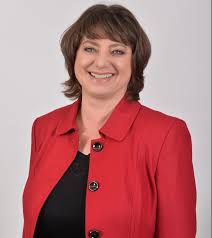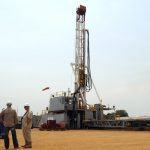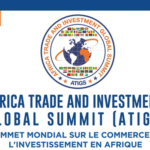|
By Sabine Dall’Omo
The term ‘Democratisation of Technology’ has become synonymous with the digital age. In a nutshell, it means that access to advanced technology is no longer the domain of a privileged few, but that more and more people are benefitting from access to smart technologies which is rapidly levelling the playing field of global innovation. One of the deciding factors in who has access to this technology, is the distribution of energy. In order to ensure the equality of technology we first need to solve the problem of unreliable energy. The concept that energy must come from one central source is inefficient and outdated. By decentralising energy and allowing people to generate and use energy as needed, you’re allowing people to take charge of their own prosperity. In a continent like Africa, with the incredible opportunity for solar and wind generated energy, keeping energy centralised severely hampers the potential for economic growth. Microgrids are an effective way to quickly and effectively diversify a centralised energy grid. By employing microgrids you not only take the strain off the central grid and lower your carbon footprint, you also create economic opportunities where people can sell off excess energy produced. The Brooklyn Microgrid (https://sie.ag/2kkyIJ5) project is an excellent example of how clean energy can be turned into thriving micro-economies. In this case, LO3 Energy, a company based in New York US, working alongside Siemens (www.Siemens.com) have installed a solar-powered microgrid. In addition to generating clean energy for its own use, the company also installed a blockchain enabled transactive energy platform. This means any unused energy can be sold, generating a new revenue stream. The same system could be put in place in certain parts of Africa. A shop or building even in remote parts of the country, for example, could install a microgrid and sell off excess energy to surrounding businesses. You could take it one step further and create a transparent energy retail environment where a resident in another part of the country, could choose to top-up their electricity directly from a microgrid supplier based elsewhere. By diversifying energy through microgrid technology, we can very quickly create new income streams in disadvantaged areas while at the same time growing and stabilising access to energy. This, in turn, will kickstart real democratisation of energy. Our Siemens office in Midrand is equipped with a microgrid and now uses 50% less power off the central grid. The office has gone more than a year with uninterrupted power and has saved about 2 460 tons of CO2 since the system was opened (174 000 kWh per month). Enabling democratisation of technology Through energy comes wider access to communication and the ability to participate in global conversations through online connectivity. This in turn nurtures creativity, innovation and economic growth. Traditionally, the journey from ‘idea’ to ‘successful product or business’ is a complicated process involving business cases, pitches for funding to build a prototype, raising capital investment for production and testing, wading through patent approvals and trademark law. While many of these steps are still crucial once you have a working prototype, the democratisation of technology makes it easier for inventors and entrepreneurs to develop their ideas. SME’s are vital economic drivers and making it easier for them to compete will benefit the economy as a whole. Digital twinning is one example that streamlines the production process. A digital twin is a virtual representation of a physical product or process, used to understand and predict the physical counterpart’s performance characteristics. Digital twins are used throughout the product lifecycle to simulate, predict, and optimise the product and production system before investing in physical prototypes and assets. This means innovators can test their products in the virtual world and refine it before ever needing to raise money for testing. Real-life testing is still vital with most products, but with digital twinning you can get your product as close to perfect in the virtual world in order to save time and costs when it comes to the final real-life test phase. In many ways this agility levels the playing field giving small, developing companies (and countries) the same opportunities as their bigger and more established counterparts. Siemens also offers this technology free to universities. Students have access to a free version of the same easy-to-use software suite used by professionals. In addition to free software, we provide tutorials, webinars, online courses and certification to help them develop their skills. Breaking down barriers Through access to technology anyone, anywhere, has the opportunity to create a thriving business or economy. Across Africa it can play a large role in the empowerment of women and youth development. One example is our Siemens Fabric campaign, which was set on the global stage, but all the fabric produced for the initiative was made by a small female-owned business situated in Alexandra, Gauteng. Legae Larona Sewing Cooperative in Alex now forms part of the Siemens Enterprise Development programme. This is where you start seeing the results of the democratisation of technology – when an innovator from a small community in a developing nation has the same access to opportunity as those operating from high-tech offices in the first world. It’s not yet a perfect system, but through the clever use of technology we can exponentially increase access to opportunity. The writer is CEO of Siemens Southern and Eastern Africa
|
Democratisation of Innovation and what it means for Africa

- Advertisement -







[…] READ MORE FROM ORIGINAL SOURCE […]